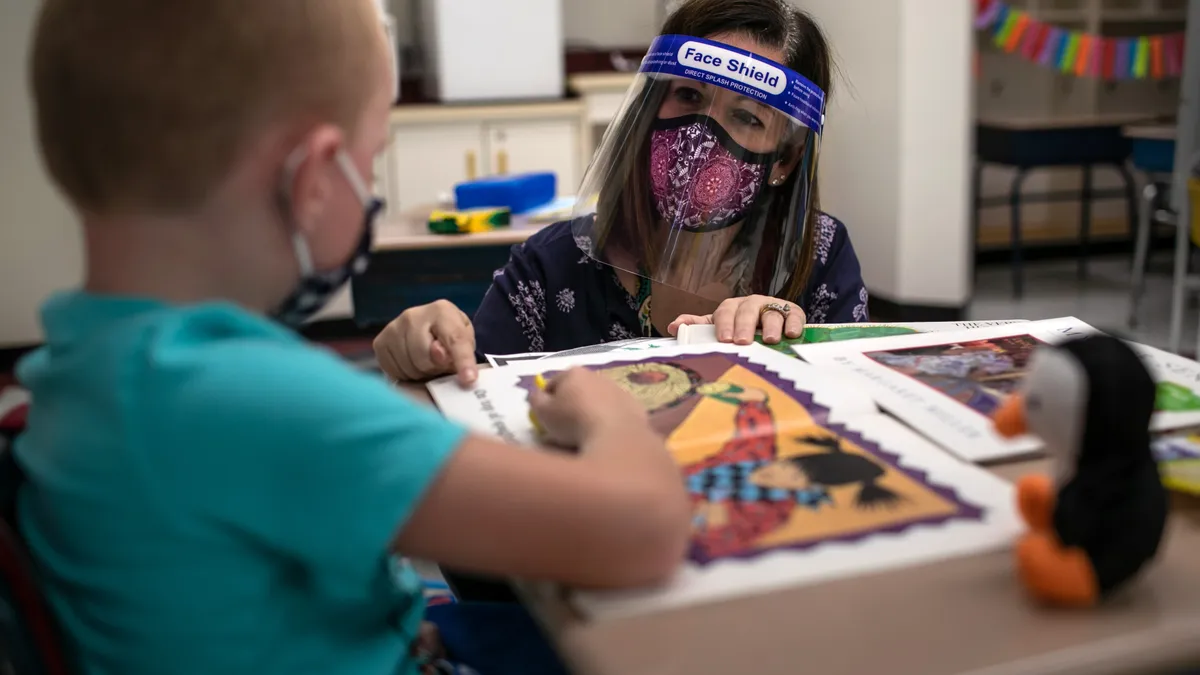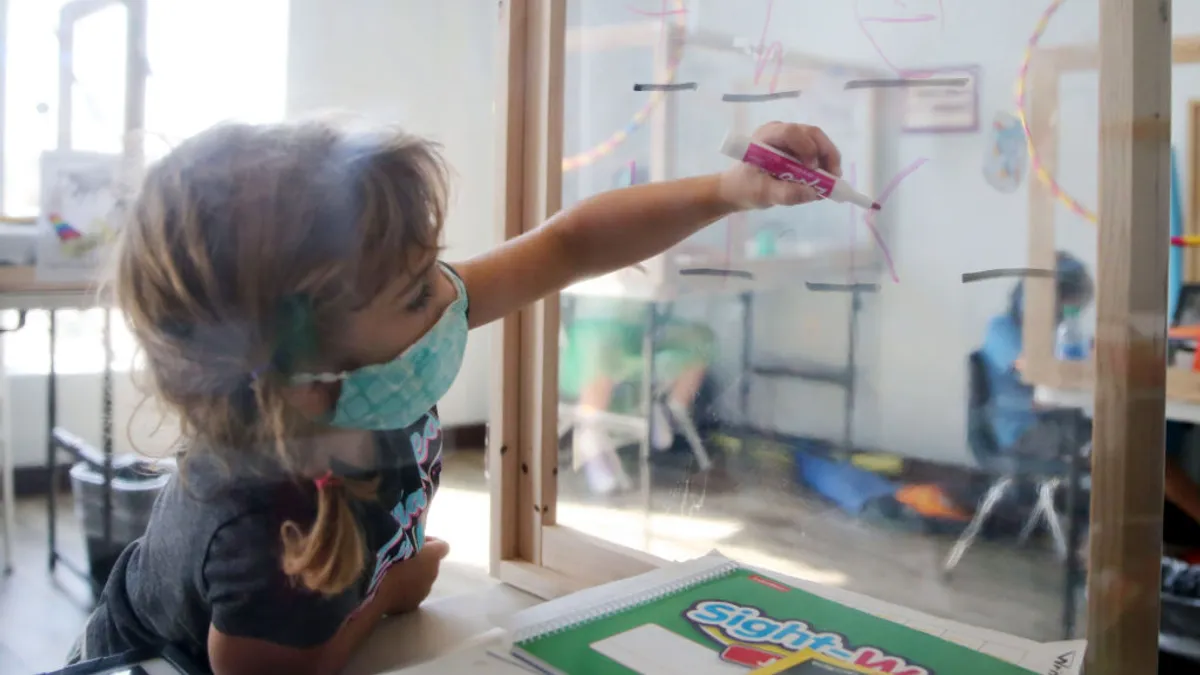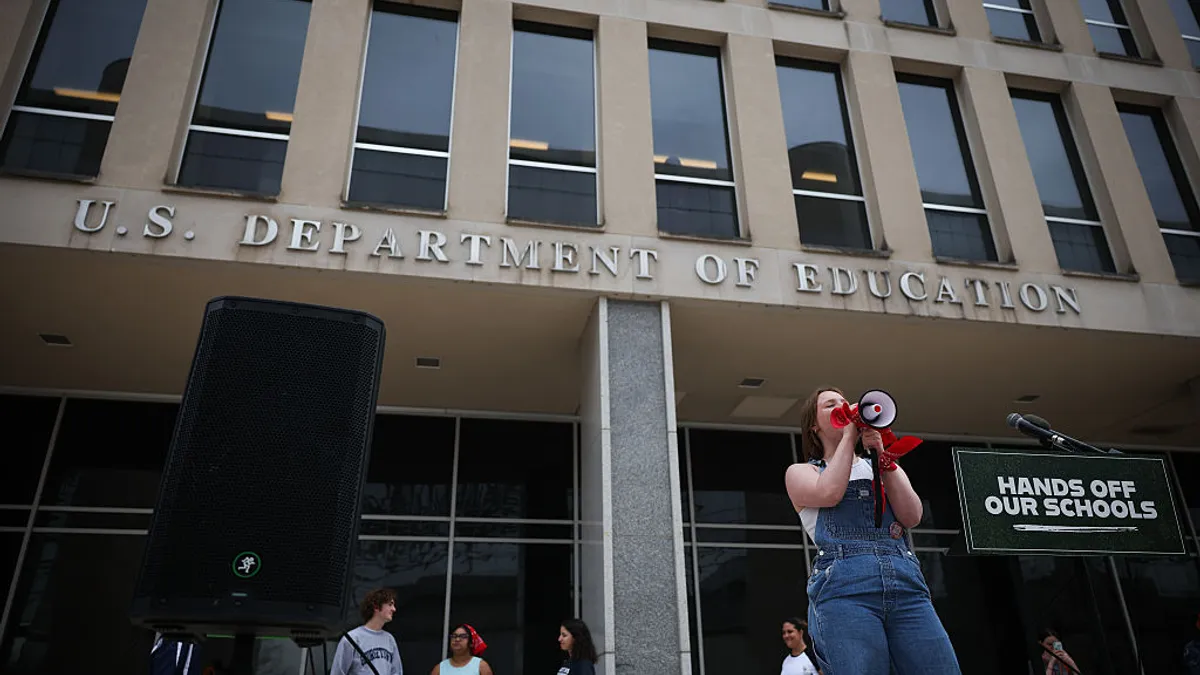The improper identification of special education students was a concern to Lauren Katzman and many others before the pandemic. Now, after a year of millions of students collectively experiencing lost instructional time, fluctuating learning formats, social isolation and trauma, the angst about special education misidentifications has grown, said Katzman, executive director of the Urban Collaborative, a network of school districts working to improve outcomes for students with disabilities.
“I do worry about it a lot,” she said. “I believe coming back to school from the pandemic could exacerbate this, but it’s not a new issue.”
Indeed, special education — or more accurately the Individuals with Disabilities Education Act, the federal law that ensures a free appropriate public education to students with disabilities — has guardrails against improper identifications, including the requirement to monitor classifications that disproportionately impact students based on race.
But it’s not a perfect system, and some of the practices for identifying students for special education are subjective, Katzman said. Additionally, a common myth is that a special education identification can get a student more individualized support. If the identification is flawed, however, the student’s special education label could actually do more harm than good, she said.
“Let me tell you, more is not better,” Katzman said.
Inappropriate identifications for special education services also have programming, staffing and financial implications for districts. Pandemic-related misidentification of students with disabilities is also of concern to school administrators, including district special education directors, said Phyllis Wolfram, executive director of the Council of Administrators of Special Education.
Wolfram and Katzman say as students return to classrooms, school administrators should make sure they have a strong multi-tiered system of supports in place to provide general education interventions to all students and be prepared to intensify those supports for students needing extra help.
School and district administrators should also monitor special education referrals and identifications, and make comprehensive investigations of the disaggregated data when the numbers are not consistent with historical trends or otherwise seem unusual, Wolfram said.
“You have to dig deeper into the information to see what the data is telling you,” she said.
Avoiding artificial caps
School systems must serve all students who qualify for IDEA services regardless of the cost or staffing availability. The number of students who qualify for special education services has slowly but steadily risen nationwide since 2009, from 5.8 million students ages 6-21 to 6.3 million or 9.5% of the total school-aged population in 2018, according to the U.S. Department of Education.
The population of IDEA-eligible students varies from state-to-state and district-to-district. For example, 9% of students in Arizona qualify for IDEA services but in Massachusetts, 12% of students qualify, according to the 2018 data.
There are no ideal local, state or federal percentages or numbers of students who qualify for special education services. In fact, districts cannot set arbitrary limits on the number of special education students they serve.
District, state and federal education agencies do monitor the data and when the numbers seem amiss, more research into the root causes for discrepancies should take place, said Sue Gamm, an attorney and independent consultant who works with school districts to review their special education practices.
One recent and prominent example is the Texas Education Agency, which entered corrective action in 2018 after a U.S. Department of Education investigation found the number of students identified for special education services statewide dropped out of proportion to the overall increase in student population. The decline in special education enrollment — from 11.6% in 2004 to 8.6% in 2016 — was blamed on a state indicator that districts perceived as an 8.5% limit for special education enrollment.
Determining an educational disability
Teachers, administrators and parents can make referrals when they suspect a student is in need of special education services. That referral kicks off a timeline to evaluate a student’s educational needs and determine if a child qualifies for services. To qualify, a student must have a disability that is also adversely impacting their ability to learn.
Special education students who have specific learning disabilities make up the largest percentage nationwide of IDEA-eligible students at 33%, according to Education Department data for the 2018-19 school year.
“There is a debate about whether trauma is or is not a disability and I want to say that the world has been traumatized this year.”

Lauren Katzman
Executive director of the Urban Collaborative
IDEA also says a lack of appropriate instruction in reading or math or being an English learner cannot be a factor in finding a student eligible for special education.
The post-COVID-19 concern is that well-intentioned educators will rush to qualify students for special education services in an attempt to catch kids up academically, said Kelly Vaillancourt Strobach, director of policy and advocacy for the National Association of School Psychologists.
NASP has released guidance emphasizing the need to differentiate students’ COVID-19 related learning disruptions from an educational disability.
While some students will most certainly qualify as needing IDEA services for the first time, that won’t be the case for most students who are academically behind or who have challenging behaviors, Vaillancourt Strobach said.
At the same time, school systems shouldn’t delay the special education evaluation process for those students who struggled academically before and during the pandemic and truly qualify for IDEA services.
“We just want to make sure we’re making the right identifications,” Vaillancourt Strobach said. “Special education can be wonderful and beneficial for a lot of kids but it can be very harmful to other kids who don't need it, who have been labeled that way, especially… the kids with emotional and behavioral disabilities.”

Disproportionality concerns
Emotional disturbance, like specific learning disability, is one of 13 recognized disability categories under the IDEA. About 5% of IDEA-eligible students have ED as their main special education classification. Black or African American students represented the second largest racial subgroup of students with ED behind students identified with two or more races, according to the Education Department’s most recent Annual Report to Congress on the Individuals with Disabilities Education Act.
Black students with and without disabilities have higher rates of exclusionary discipline than other student subgroups. For example, although Black male students made up 8% of the student population during the 2015-15 school year, they had 25% of the out-of-school suspensions, according to data from the Education Department’s Civil Rights Data Collection.
The CRDC data also shows that although students with disabilities comprised 12% of the student population, they had 26% of the out-of-school suspensions.
Vaillancourt Strobach said there’s concern that as students reenter classrooms after learning virtually for so long, the adjustment to school routines and rules could be difficult for students whose at-home time wasn’t as structured.
“What we don't want to see happen is those kids being inappropriately labeled as having an emotional disability because what they really needed was a little bit of time to transition and a little bit of support from the school counselor or the school psychologist — or you know, whomever — to just let them ease back in,” she said.
The financial and emotional hardships students experienced during the pandemic could also be a factor in students’ challenging behaviors, special education experts said.
“There is a debate about whether trauma is or is not a disability, and I want to say that the world has been traumatized this year,” Katzman said. “You're gonna have kids acting in all sorts of ways when they come back, and I think we need to assume that and not count that as a disability.”
Recommended practices
Gamm and other special education experts say there are several best practices school systems should consider for the prevention of misidentifying students for special education services. They include:
-
Strengthening multi-tiered system of supports. Special education experts say MTSS is one of the best methods for preventing inappropriate special education identifications. Having strong general education practices for providing evidence-based instructional supports that increase in intensity based on individual students’ needs can help schools address academic regressions.
Likewise, positive behavioral intervention and supports is also a multi-tiered framework that can prevent challenging behaviors first with a whole school approach and through more individualized interventions in order to meet a range of students' needs. -
Understanding the IDEA referral and identification process. If a district lacks a strong MTSS framework, then special education services may seem like the best way to provide help to struggling students, but it’s not always the solution, Katzman said.
The special education referral and identification process is supposed to distinguish students who truly need services from those who don’t. Strong systems for special education referrals and identifications can help prevent misclassifications and harmful disproportionate practices, according to research recently published by The Brookings Institution.
Even though any educator or parent can refer a student for special education services, the process for finding a student eligible for IDEA support includes reviews of multiple indicators of a student’s past and present learning status, as well as applying the criteria for identifying a student with one or more of the 13 IDEA-recognized disabilities. -
Monitoring data for areas of concern. School districts can proactively initiate data deep dives, said Gamm, who worked with the Detroit Public Schools Community District and the Council of Great City Schools to review the school system’s special education practices, including disability prevalence rates.
The review, which concluded in 2018, showed the percentage of IDEA-eligible students was higher than state, urban districts and national averages. As a result, one of the recommendations from the review was that a multidisciplinary team of educators provide more specific guidance for special education referrals, evaluations and eligibility.
Wolfram said special education directors should monitor both referral and identification rates and disaggregate that data by class, grade, school, race, gender and other factors. -
Supporting teachers. Katzman advises school administrators find the teachers who are struggling and provide those teachers extra support and training. Gamm adds that all teachers should have training in the MTSS framework.
Teachers, however, shouldn’t carry all the burden for MTSS or pre-referral monitoring for special education, they say. School psychologists and other instructional support personnel, for example, can assist teachers with designing and monitoring classwide interventions, Vaillancourt Strobach said.
“Teachers are the ones in the classroom but there needs to be a team of people who are all supporting this work and principals and school leaders need to take a good look at the available resources that they have and make sure that they're being used most effectively,” she said.








 Dive Awards
Dive Awards














